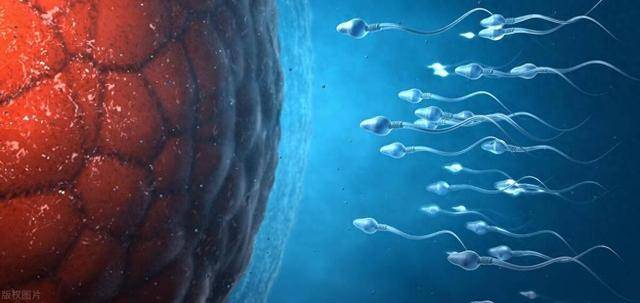Before reading this article, we invite you to click on “Follow” to receive daily professional medical popular science knowledge to help you and your family improve the quality of health and life. Thank you for your support!
Evaluation criteria for semen quality:
In daily life, many men are puzzled by the quality of their semen. In fact, there are several simple criteria for evaluating semen quality.
The first is the smell. Normal semen should have a faint scent of boxwood flowers, which is due to certain chemical components in the semen.
If the smell of semen is abnormal, such as a foul odor or other unusual smells, it may indicate prostatic or seminal vesicle lesions, which require attention.
The color is another important criterion. Healthy semen should be milky white or grayish-white, sometimes slightly yellow, but should not be red, brown, or green.
If semen appears red or brown, it may be due to blood mixing in the semen, a condition known as hematospermia, which may indicate inflammation or injury to the reproductive system. Green semen may signal infection.
The volume of semen is also an important criterion. The amount of semen ejaculated by adult men should be between 2-6 milliliters per ejaculation. If the volume of semen is too low, it may indicate certain diseases or abnormalities in the reproductive system. However, excessive semen volume is also not desirable as it may dilute sperm concentration and affect fertility.
Lastly, liquefaction time. Semen should liquefy within 15 minutes after ejaculation. If it takes more than 60 minutes, it may indicate inflammation or other issues in the reproductive system. Prolonged liquefaction time can affect sperm motility and consequently impact the chances of conception.
Factors affecting semen quality:
Frequent sexual activity. Engaging in frequent sexual activity within a short period may reduce semen volume and sperm concentration, thus affecting semen quality. Therefore, moderate sexual activity helps maintain the quality of semen.
Abstinence time is also an important factor. Short-term abstinence (1-2 days) helps generate better quality sperm, but prolonged abstinence may lead to a decrease in sperm quality. Thus, maintaining moderate abstinence positively affects semen quality.
Low semen volume does not necessarily mean male infertility; the key lies in the concentration and quality of sperm. Even with low semen volume, successful conception is possible as long as sperm concentration and motility are normal.
Regarding WiFi radiation, many people are concerned about its impact on sperm activity. However, in reality, WiFi radiation has minimal effects on sperm activity, so there is no need for excessive worry.
Cycling is another common concern. Prolonged cycling may affect sperm activity due to local temperature elevation, but currently there is no conclusive evidence directly linking the two. Moderate cycling does not significantly affect semen quality.
Ejaculation distance is somewhat related to sexual performance, but not a decisive factor. Distance is mainly influenced by muscle strength and ejaculation pressure, with little relation to semen quality.
Origin and composition of semen:
The production of semen is a complex process involving the coordinated work of multiple reproductive organs. Firstly, sperm develop from spermatogonia in the testicles. Testicles are the primary site of sperm production, capable of generating millions of sperm daily.
Seminal fluid is the main component of semen, consisting of prostatic fluid, seminal vesicle fluid, and bulbourethral gland fluid. Prostatic fluid accounts for about 30% of semen and contains various enzymes and proteins that support sperm survival and activity.
Seminal vesicle fluid comprises approximately 60% of semen and is rich in fructose, providing energy for sperm. Bulbourethral gland fluid acts as a lubricant, aiding in the smooth passage of semen through the urethra.
The final formation of semen is a complex process, with each component serving unique functions. Understanding the origin and composition of semen helps men better comprehend their reproductive health.
Other factors influencing semen:
Dietary habits significantly impact semen quality. A high-fat, high-sugar diet may lower semen quality and even affect fertility.
A healthy diet improves semen quality, enhances sperm vitality and quantity. Consuming foods rich in antioxidants such as fruits, vegetables, and nuts effectively enhances semen quality. Additionally, moderate intake of zinc- and selenium-rich foods like seafood and nuts facilitates sperm generation and activity.
Smoking and alcohol consumption are other crucial factors affecting semen quality. Smoking reduces sperm count, vitality, and increases the risk of sperm abnormalities.
Excessive alcohol consumption also negatively impacts semen quality, leading to reduced sperm vitality and count. Quitting smoking and limiting alcohol not only enhances fertility but also improves overall health.
Environmental pollution is a significant factor not to be overlooked. Prolonged exposure to polluted environments containing heavy metals and chemicals can negatively affect semen quality.
Studies have found that harmful substances in air, water, and soil pollution can enter the body through the respiratory tract, digestive tract, and skin, affecting the normal function of the reproductive system. Minimizing time spent in polluted environments and maintaining good lifestyle habits contribute to protecting semen quality.
Lastly, do you have any experiences or opinions to share? Feel free to leave a comment in the comments section!


